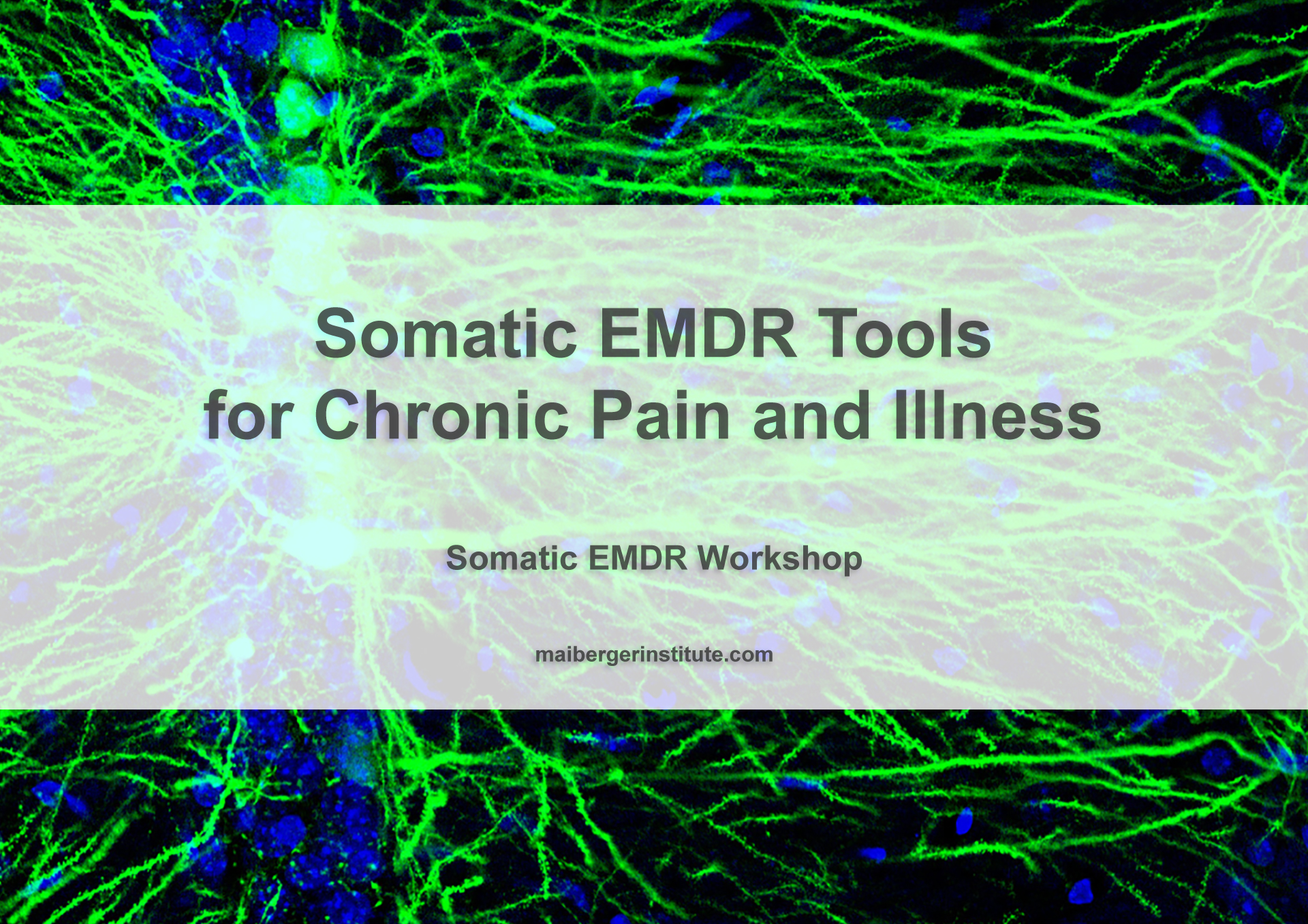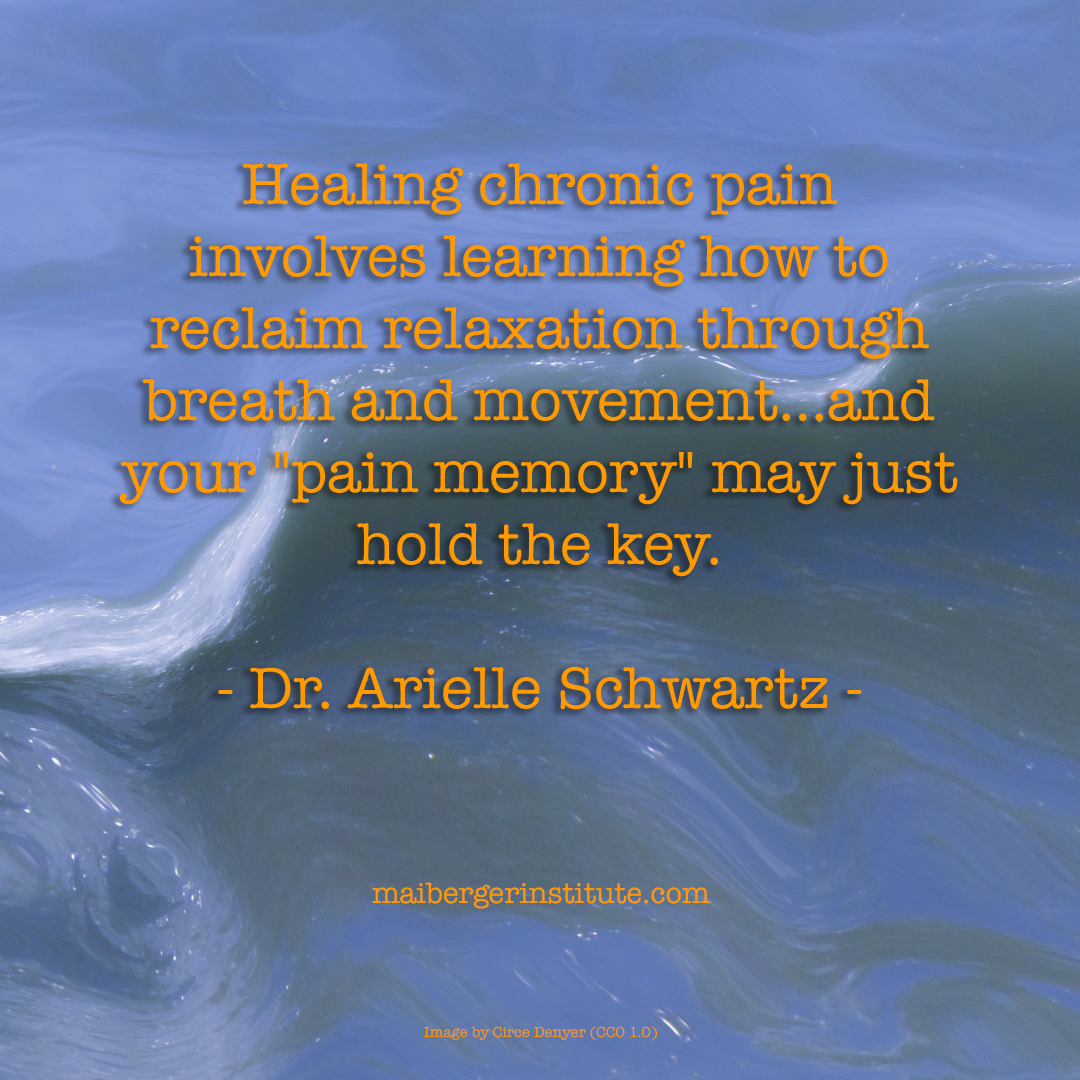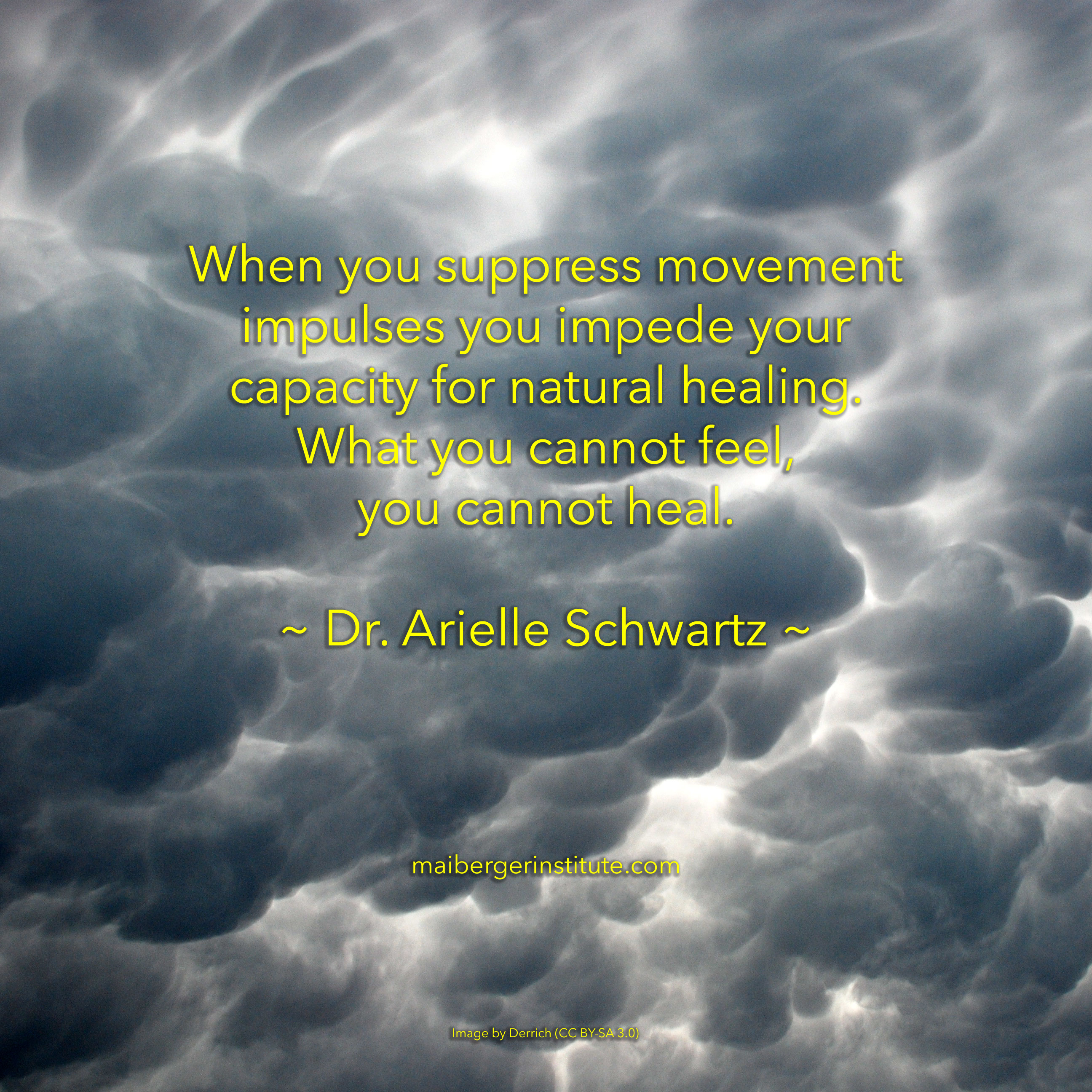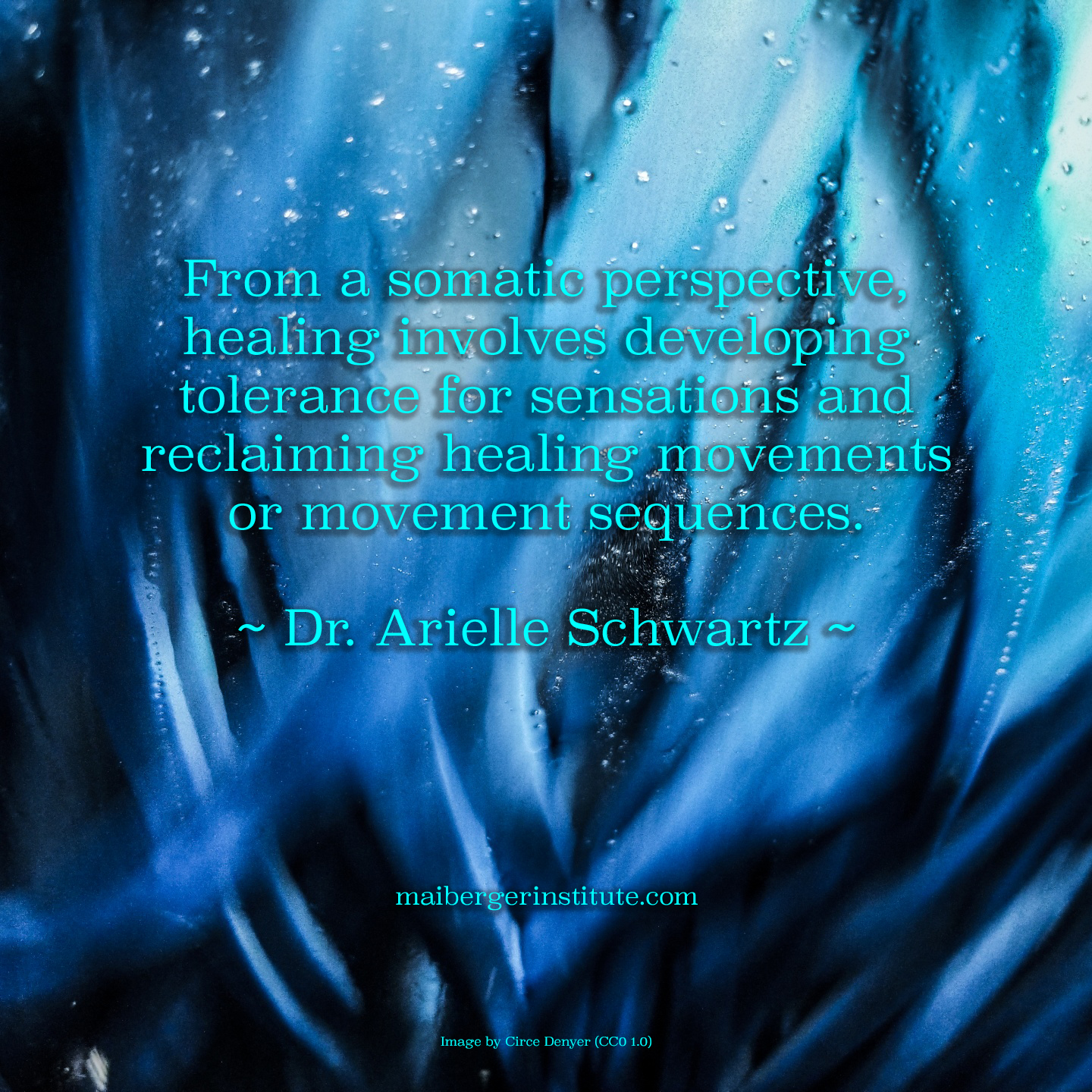Healing chronic pain involves learning how to reclaim relaxation through breath and movement…and your “pain memory” may just hold the key.
~ Dr. Arielle Schwartz ~
The experience of pain, like all of our life experiences, is stored as a memory, a procedural memory to be more precise. Procedural memories involve brain centers that retain the sequence of motor skills and actions. Over time, these neuromuscular pathways of pain become reinforced through myelination (the fatty coating that strengthens neuronal connections). Examples of procedural memories include riding a bike or tying your shoe. Once a procedural memory is learned you no longer need to think about it; our neural networks continue to repeat them on autopilot. Importantly, procedural memories can be resistant to change. in other words, chronic pain can start in the body but be maintained by changes in brain activity.
Why would one want to remember pain? Because the body is wired for self-protection. It is a protective response to remember previous injuries…so that we can protect ourselves in the future if we face a similar threat. However, this “pain memory” can set off false alarms in which we interpret a threat when, in fact, there is no danger or if there is a minor concern the pain response is stronger or out of proportion with the situation. Healing chronic pain involves learning how to reclaim relaxation through breath and movement…and your “pain memory” may just hold the key.
When you suppress movement impulses you impede your capacity for natural healing. What you cannot feel, you cannot heal.
~ Dr. Arielle Schwartz ~
In addition, your pain is a connection to your past. Having a history of unresolved PTSD, especially childhood abuse, is associated with higher reports of chronic pain conditions including fibromyalgia. This may be linked to long-term holding of tension in your body to restrict vulnerable feelings. Holding muscular tension can help you avoid sensations…and as a result push away somatic reminders of a painful past.
However, we live in a culture of stillness and many of us have learned to override our body’s natural impulses for movement. We suppress our sensations, emotions, and movement impulses. Suppression of movements inhibits your ability to resolve the nervous system activation into homeostasis and interferes with your ability to access the parasympathetic relaxation response. As a result, your muscles retain low levels of incomplete movements in the form of passive tension that is held without conscious awareness.
Long-term suppression of movement impulses has consequences on health such as chronic pain, higher levels of cardiovascular disease, higher blood pressure, higher rates of gastrointestinal diseases, respiratory diseases such as asthma, and serious autoimmune disorders. In short, when you suppress movement impulses you impede your capacity for natural healing. What you cannot feel, you cannot heal.
From a somatic perspective, healing involves developing tolerance for sensations and reclaiming healing movements or movement sequences.
~ Dr. Arielle Schwartz ~
If a client has a history of trauma and chronic pain, they may need to relearn the art of listening to their body in a safe and slow manner. The synthesis of EMDR therapy and somatic psychology is instrumental because symptoms of chronic pain and illness are integrated with memory networks and emotional processes. In our workshop on Somatic EMDR Tools for Chronic Pain and Illness, therapists learn interventions that assist clients to build self-care routines and apply mindfulness as a tool to work with distressing symptoms. Further interventions explore the use of traditional and modified EMDR therapy protocols to address the traumatic memory contributors to physical distress. For example, therapists will learn how to sensitively develop targets related to symptoms of pain or illness. Here, the emphasis on embodiment provides an approach to directly target symptoms in the body. From a somatic perspective, healing involves developing tolerance for sensations and reclaiming healing movements or movement sequences. Therapists can help clients to reclaim healing movement impulses that were suppressed (sometimes many years ago) and reclaim their lives from chronic pain conditions.
About Guest Blogger Dr. Arielle Schwartz

Dr. Schwartz is a licensed clinical psychologist, author, EMDR Therapy consultant, and Certified Kripalu yoga teacher with a private practice in Boulder, Colorado. She earned her a Masters in Somatic Psychology through Naropa University and her doctorate in Clinical Psychology at Fielding Graduate University. She is a core teacher with The Maiberger Institute offering therapist workshops in EMDR Therapy and Somatic psychology. She offers informational mental health and wellness updates through her heartfelt presentations, social media presence, and blog. She is the author of The Complex PTSD Workbook: A Mind-Body Approach to Regaining Emotional Control and Becoming Whole, and the co-author of EMDR Therapy and Somatic Psychology: Interventions to Enhance Embodiment in Trauma Treatment.
About Arielle Schwartz, PhD, LP Arielle Schwartz’s Website
 Somatic EMDR Tools for Chronic Pain and Illness
Somatic EMDR Tools for Chronic Pain and Illness
This two-day EMDRIA approved Somatic EMDR Workshop applies the 8 Phases of EMDR Therapy to working with Chronic Pain and Illness. Therapists will learn about the relationship between childhood trauma and chronic illness (ACE study) and how to assess for related EMDR targets with clients. This course will review the neuroscience that underlies stress, chronic PTSD and illness. Experiential exercises will be explored for building affect tolerance through resource development installation and desensitizing targets related to pain and illness. Therapists will be introduced to body centered interventions including trauma sensitive yoga as integrated with EMDR Therapy. The weekend will include time for case discussion and application.
Learn More About This Workshop
Image Source: “Ocean Movement Abstract” ~ by Circe Denyer (CC0 1.0), “Mammatus clouds in San Antonio, TX – 2009” ~ by Derrich (CC BY-SA 3.0), “Water And Movement” ~ by Circe Denyer (CC0 1.0)








